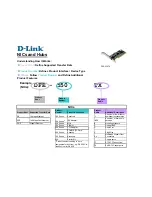
34. Dynamic Routing
ROX™ v2.2 User Guide
404
RuggedBackbone™ RX1500
Figure 34.5. Routing Timers Form
The RIP protocol has several timers. The user can configure those timers’ values by the timers-basic
element.
The default settings for the timers are as follows:
* The update timer is 30 seconds. Every update timer seconds, the RIP process is awakened to send
an unsolicited response message containing the complete routing table to all neighboring RIP routers.
* The timeout timer is 180 seconds. Upon expiration of the timeout, the route is no longer valid; however,
it is retained in the routing table for a short time so that neighbors can be notified that the route has
been dropped.
* The garbage collect timer is 120 seconds. Upon expiration of the garbage-collection timer, the route
is finally removed from the routing table.
Update Timer
Synopsis: unsigned integer
Default: 30
The routing table update timer (in seconds).
Timeout Timer
Synopsis: unsigned integer
Default: 180
The routing information timeout timer (in seconds).
Garbage Collection Timer
Synopsis: unsigned integer
Default: 120
The garbage collection timer (in seconds).
34.3.1.1. RIP Networks
Neighbors are specific routers with which to exchange routes using the RIP protocol. This can be used
when you want to explicitly control which routers are part of your RIP network.
Networks are used when you want to add any router that is part of a specific subnet, or connected to
a specific network interface to be part of your RIP network.
Both neighbors and networks can be used at the same time.
For point to point links (T1/E1 links for example), one must use neighbor entries to add
other routers to exchange routes with. Also note that RIP v1 does not send subnet mask
information in its updates. Any defined networks are restricted to the classic (in the sense
of Class A, B and C) networks. RIP v2 does not have this failing.
















































